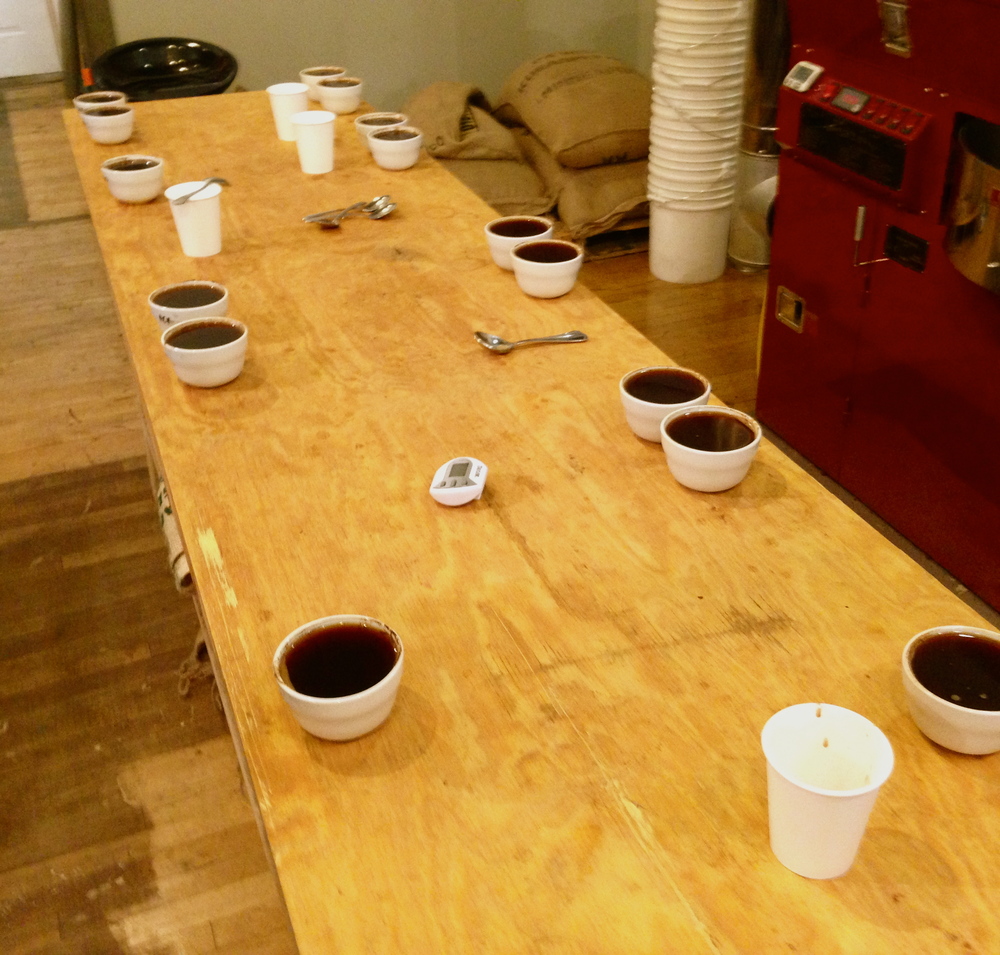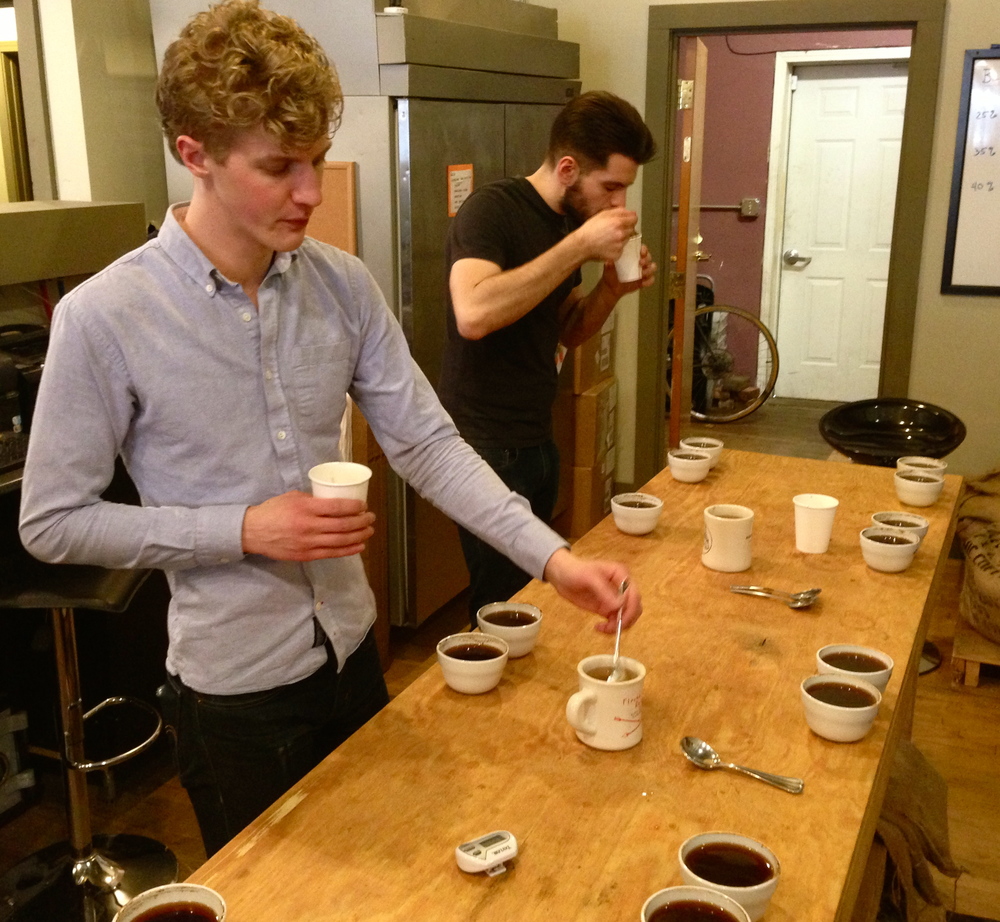In our last two posts, we introduced you to the science and importance of cupping then took you through the first step of minding our noses. Now would be a good time to go back and refresh or catch up before continuing on to our favorite part: Tasting.

Part 3: How to Taste
The last couple of steps of the "smelling part" of the process included pouring hot water over the grounds, letting it sit and brew, then breaking the crust that has formed and taking in the new wet aromas. Once the coffees have cooled sufficiently, we’re ready to start tasting.
When coffee is still too hot (and that heat is essential for brewing), it is much more difficult to taste all of its complex flavors. Interesting fact: We have all become accustomed to piping hot cups of coffee but this usually just masks the flavors of a bad coffee. When bad coffee cools all of those unpleasant, ashy, bitter flavors show there true colors. A truly good coffee, in contrast, will unveil some of its most unique, pleasant qualities only as it begins to cool.

At this point, the room gets a little noisy with the symphony of slurping. Everyone's got their own unique style and sound. Sitting in on a cupping is worth it just to experience the wide array of jungle noises you might hear when a group of focused baristas is throwing away their manners and slurping away. Tempted right?
But of course- the purpose is not to annoy. It’s important to aspirate the coffee well, letting it hit every area of the pallet - even “chewing” it a bit and breathing in while we swallow (or spit out when we get over-caffeinated). This allows us to experience every nuance of the coffee’s flavors as it washes over our taste buds. You might even do something like this already when sipping a over a bowl of soup. Pay attention next time.
Tasting is, of course, when we get to experience the coffee in its fullness. As we move around the table multiple times, we’ll think about the coffee under five overarching categories: sweetness, acidity, body, finish (aftertaste) and balance. Below are some basic things we look for under these broad headings:
Sweetness: Does the coffee have an overall pleasant flavor? Is there a noticeable sweetness that brings balance to the cup? Is it more of a caramel sweetness or a fruity one? True, coffee has bitter components, but when bitterness is the only thing coming through, you probably aren’t drinking a good coffee.
Acidity: This can be a tricky one to evaluate as it comes through in many forms. Is their a crispness, brightness or effervescence to the cup? Does it “snap”? Is it more of a citric (think grapefruits and oranges) or vegetable acidity (think tomatoes)? Acidity is what often gives a coffee a lot of character, but it must be balanced out with other characteristics or it can be overpowering.
Body: Literally, what does the coffee feel like in your mouth? Is it thick and creamy, or is it light and soft? Certain characteristics go well with deeper-bodied coffees, but some coffees (like our Los Naranjos for example) need a delicate and light body to allow the gentle, sweet flavors to come through.
Finish: Do you continue to experience the coffee after you swallow it? Does it linger on your tongue? Is it still pleasant and clean, or does it leave you with a bitter aftertaste that you can’t seem to get rid of? It is possible that a coffee will seem to be very pleasant up until the point that it leaves your tongue.
Balance: This is simply the big picture of a coffee. In all of the above categories many different characteristics can be pleasing or not depending on how they fit within the whole picture. Just as in music, a solo might be executed with technical perfection, but if it feels out of place within the whole song, it just doesn’t work. Period.

Again- coffee changes while it cools, and you can’t experience the full spectrum of its flavors without patiently tasting it for quite a while. We spend up to 30 minutes tasting around the cupping table. With this particular Brazil, we are happy with the coffee we honed in on. We wanted to find a coffee with a lot of sweetness, body and a low acidity to balance out the fruity, acidic characteristics of our other espresso components. We think you’ll find that all of this effort was well worth it. Come try our espresso this month and then again later in June and see if you think it’s only getting better!

